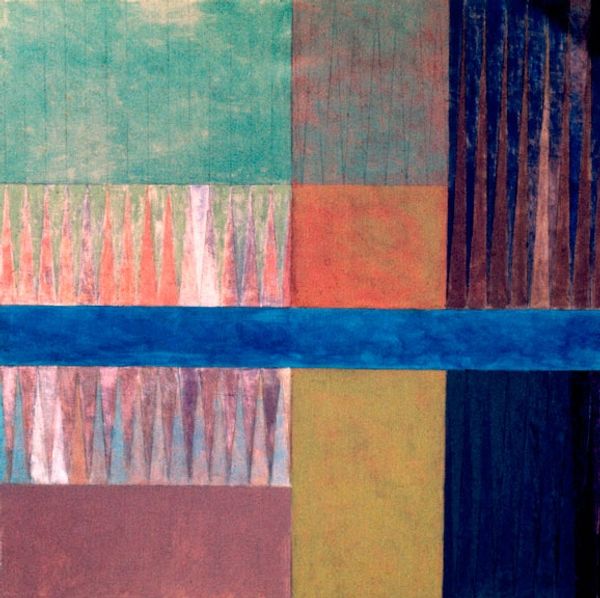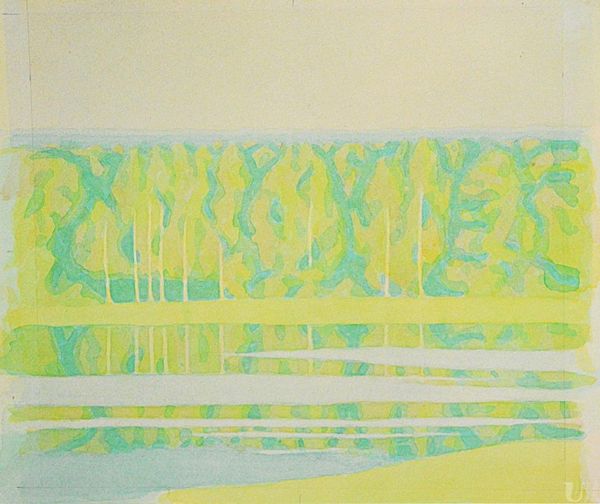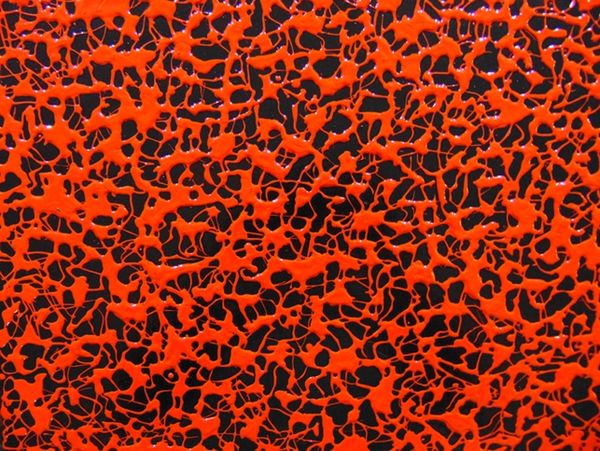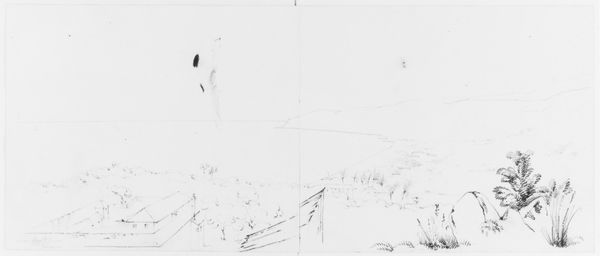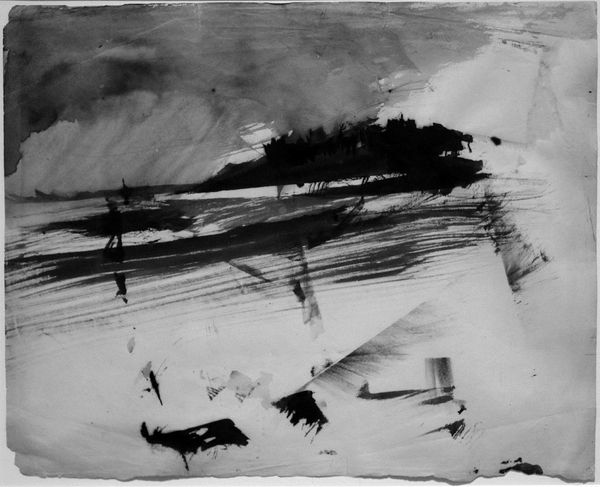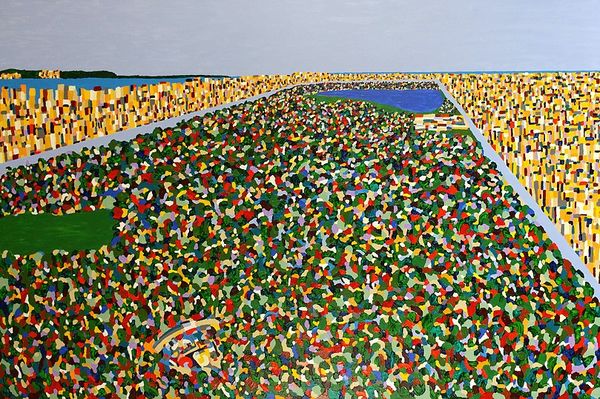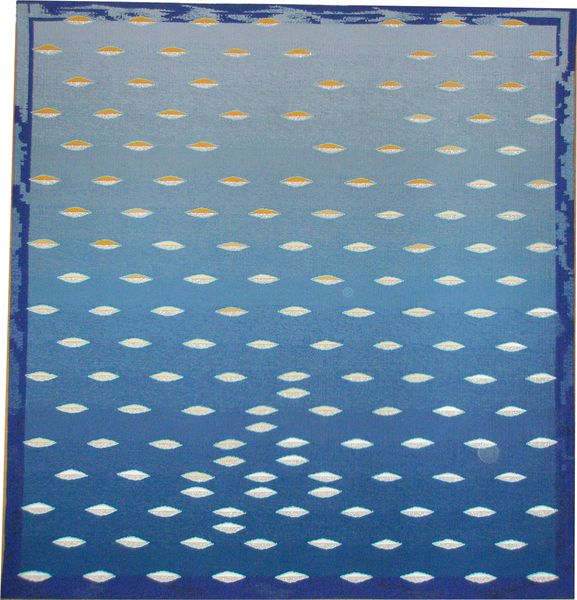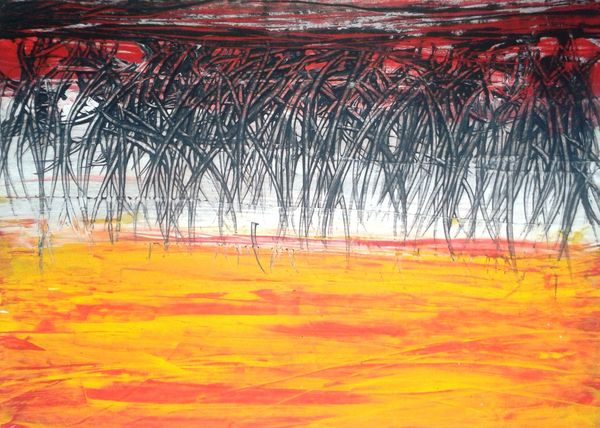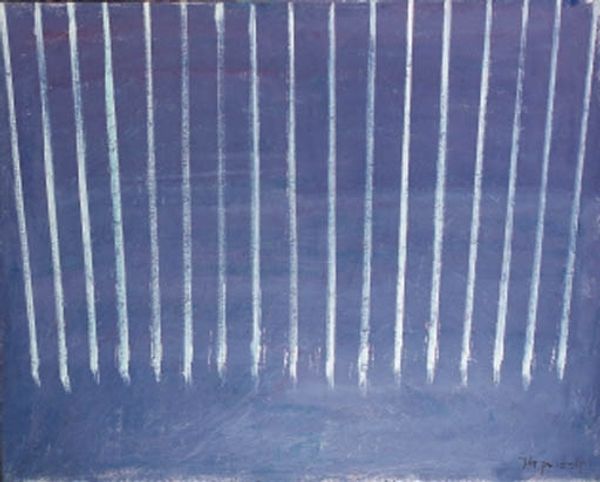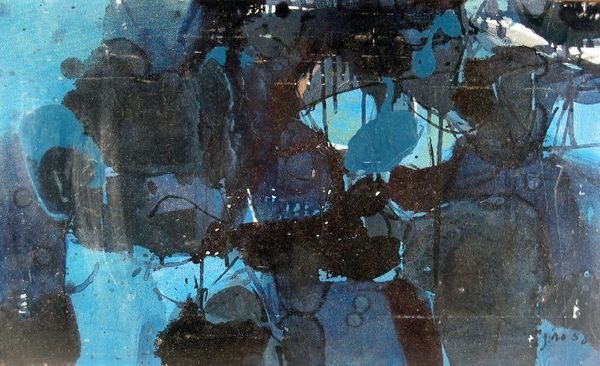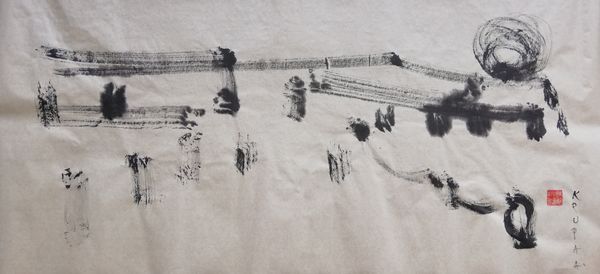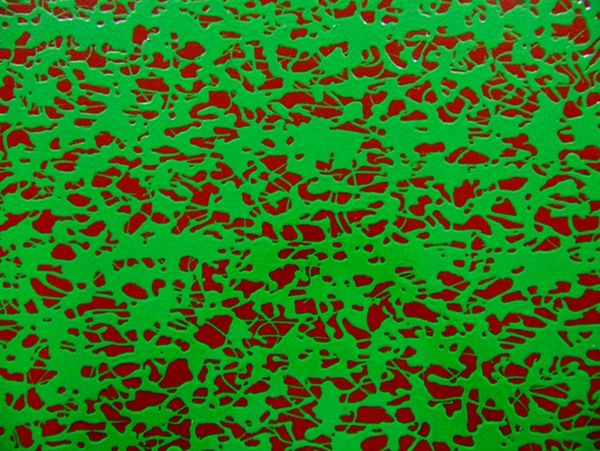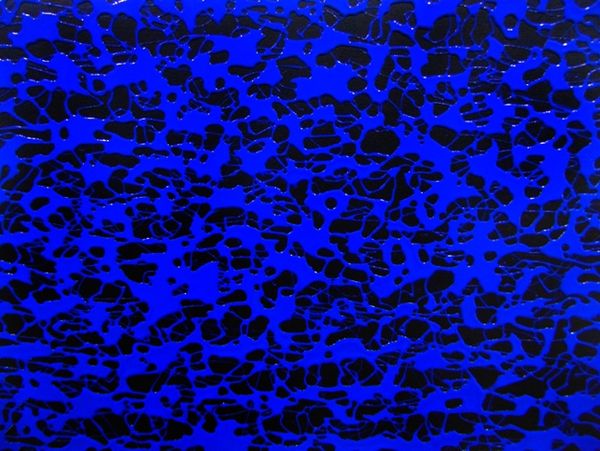
Copyright: Eyvind Earle,Fair Use
Editor: So, this is Eyvind Earle’s "Grazing in Peace," painted in 1970 using acrylic paint. It's strikingly simple, almost like a child's drawing, but there's also a stillness that's very compelling. What do you see in this piece? Curator: I see a deliberate reduction of forms, yes, but also a powerful invocation of memory. The abstracted landscape, dotted with these nearly identical black cows, suggests a kind of collective, agrarian memory. Think of it as an idealized vision of rural life—stripped of complexity and presented as pure, untroubled harmony. Editor: Harmony... because they all look alike, and all the same color? Curator: Partly. But also because the artist uses a consistent symbolic language. Notice how the shapes are simplified, the colours are muted, and the scene lacks sharp details. This contributes to a sense of universal experience rather than a specific one. These cows aren't individual animals; they're symbolic representations of pastoral tranquility. Editor: Like a symbol representing an idea? It reminds me a little of simplified landscapes you sometimes see in early Byzantine art, though much more minimal. Curator: Precisely! In both instances, there is an urge towards simplification. Earle presents to the modern eye a sanitized and universally accessible idea. Even the title reinforces that reading, directing our gaze towards an emotional state rather than a specific place. Does that connection with Byzantine art affect how you see this work? Editor: It gives me a richer appreciation of the ways that artists can carry symbolic representation through centuries. Now the uniformity and simplified details feel more deliberate and meaningful. Curator: And that, is precisely how a visual language is established and transcends history. It’s been wonderful teasing out those symbolic threads with you.
Comments
No comments
Be the first to comment and join the conversation on the ultimate creative platform.
